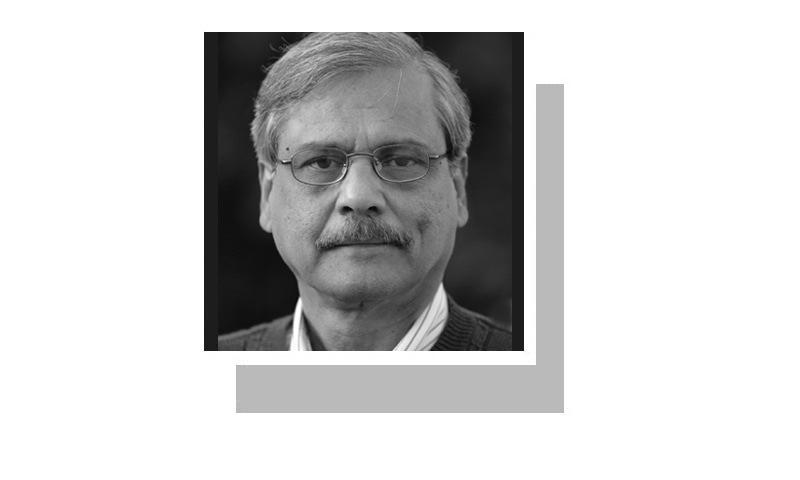
THE guns may have fallen silent after a night of fierce fighting between Pakistani and Afghan Taliban forces along the border, but the situation can flare up again anytime. It was not the first time both forces have clashed, but the latest fighting was certainly the fiercest.
For several hours Pakistan’s ground and air force pounded targets inside Afghanistan along the entire stretch of the long border. It was said to be in response to the attack on Pakistani border posts by Taliban forces. Heavy casualties have been reported on both sides. The latest round of skirmishes started after Pakistan Air Force jets and drones reportedly struck alleged militant sanctuaries across the border.
The main targets of the airstrikes were believed to be TTP leaders, particularly Noor Wali Mehsud, the alleged mastermind of the recent attacks on Pakistani security forces. There are conflicting reports about whether he was killed in the raid.
Although Pakistan did not say if it was behind the blasts in Kabul and other places, it has repeatedly declared that the country has the right to defend itself against surging cross-border militant attacks on its security forces. In this month alone scores of Pakistan security personnel, including army officers, have been martyred in the attacks by various factions of the TTP. This year has been the bloodiest in the past decade.
The worsening conflict between the two neighbours carries serious implications for regional security.
It seems Pakistan has lost patience with the Afghan Taliban administration refusing to act against the TTP sanctuaries being used to stage cross-border attacks. The tension further heightened after Pakistan claimed it had evidence about Afghan Taliban men also being involved in some of the terrorist attacks inside Pakistan.
It was not the first time the PAF has targeted militant sanctuaries inside Afghanistan — some of which were officially acknowledged — but the latest strikes were said to be the most devastating. Declaring the incursion as an attack on Afghanistan’s sovereignty, Taliban forces retaliated by attacking multiple Pakistani security border posts, claiming to have killed dozens of soldiers.
The fighting has stopped but the situation remains extremely volatile. The borders are closed completely, stopping trade and travel between both countries. The worsening conflict between the two neighbouring nations carries serious implications for regional security.
Interestingly, the latest clashes occurred when some positive developments had taken place after Ishaq Dar’s recent visit to Kabul, and Pakistan had decided to upgrade diplomatic relations between the two countries. China also played a significant role in cooling the tension. Kabul and Islamabad had since been holding regular official-level talks to ease tension.
Meanwhile, Islamabad had also decided to reopen some of the trading routes closed down for months. The two foreign ministers had recently met under the aegis of the so-called Moscow Format on Afghanistan. But the situation has changed completely in the past few days with the border clashes. Kabul refused to receive a Pakistan delegation led by the special envoy for a regular weekly meeting.
Curiously the latest flare-up happened when the Afghan Taliban foreign minister was on a visit to India. The relations between Kabul and New Delhi have improved greatly over the last few months at a time when India and Pakistan were locked in bitter conflict.
Although New Delhi has not recognised the Taliban administration, it has now announced to upgrade its office in Kabul to the level of a full-fledged embassy. The development signifies a remarkable shift in India’s position on the conservative Islamic movement. In the past India had described the Taliban as proxies of Pakistan.
But the dramatic changes should not come as a surprise in the current regional geopolitics where “the enemy of my enemy is my friend” seems to be the guiding policy. The growing relations between New Delhi and Kabul, however, reinforce Pakistan’s concern about revival of the old nexus threatening its western border. Pakistan’s security institutions have long been accusing India of backing the TTP and other militant groups involved in terrorist activities.
There may be no denying the security threat emanating from the militant sanctuaries across the border. But it’s not the only reason for the surge in militancy in the country. One must not gloss over the failure of our own counterterrorism policies. Arguably, we have never had a long-term and coherent policy to deal with this existentialist threat. Our inconsistency in dealing with the threat has been a major cause for the current surge in militancy.
The military’s spokesman in his recent press conference in Peshawar tried to shift the blame to the then political leadership for allowing thousands of armed TTP fighters back home. But the fact is that all state institutions were on board at the time.
TTP fighters were allowed to return without any precondition, including some ‘jet black’ terrorists. It was all reportedly done on the pressure of the new Afghan Taliban administration, which was then seen as a close ally. Could it have happened without the approval of the state?
Most importantly, the political instability in the two strategically located provinces — Khyber Pakhtunkhwa and Balochistan, which are the main centres of militant violence — has given huge impetus to the outlawed groups to operate.
What the state is not willing to accept is that the rise of militancy is directly linked with political instability. Only kinetic operations cannot defeat militancy. The growing political alienation in KP and Balochistan is most alarming. There is a huge trust gap between the local population and the security forces in the troubled areas, making it much more difficult to fight militancy.
Putting the entire blame on external forces is not enough; we must put our own house in order. No country can successfully fight insurgency without public support.
The writer is an author and journalist.
X: @hidhussain
Published in Dawn, October 15th, 2025

